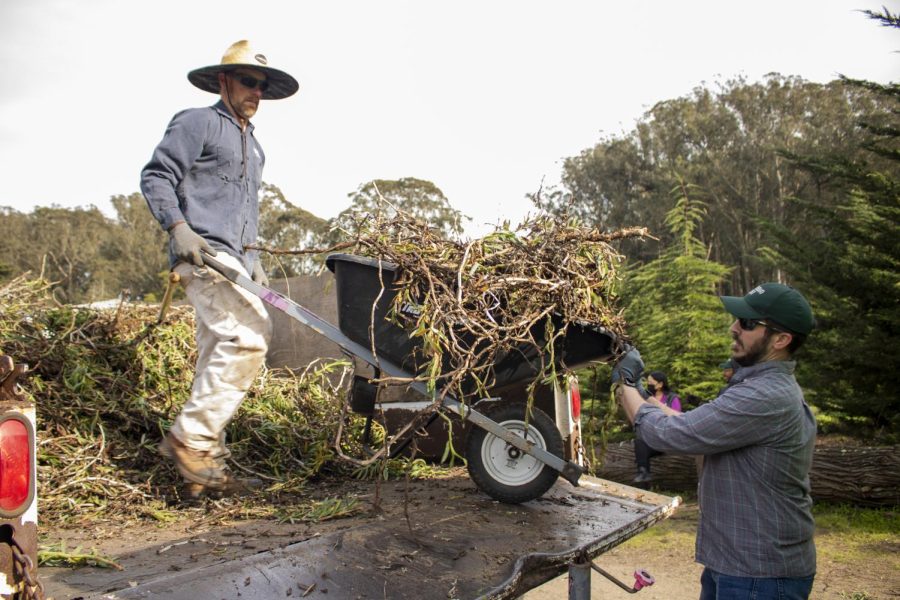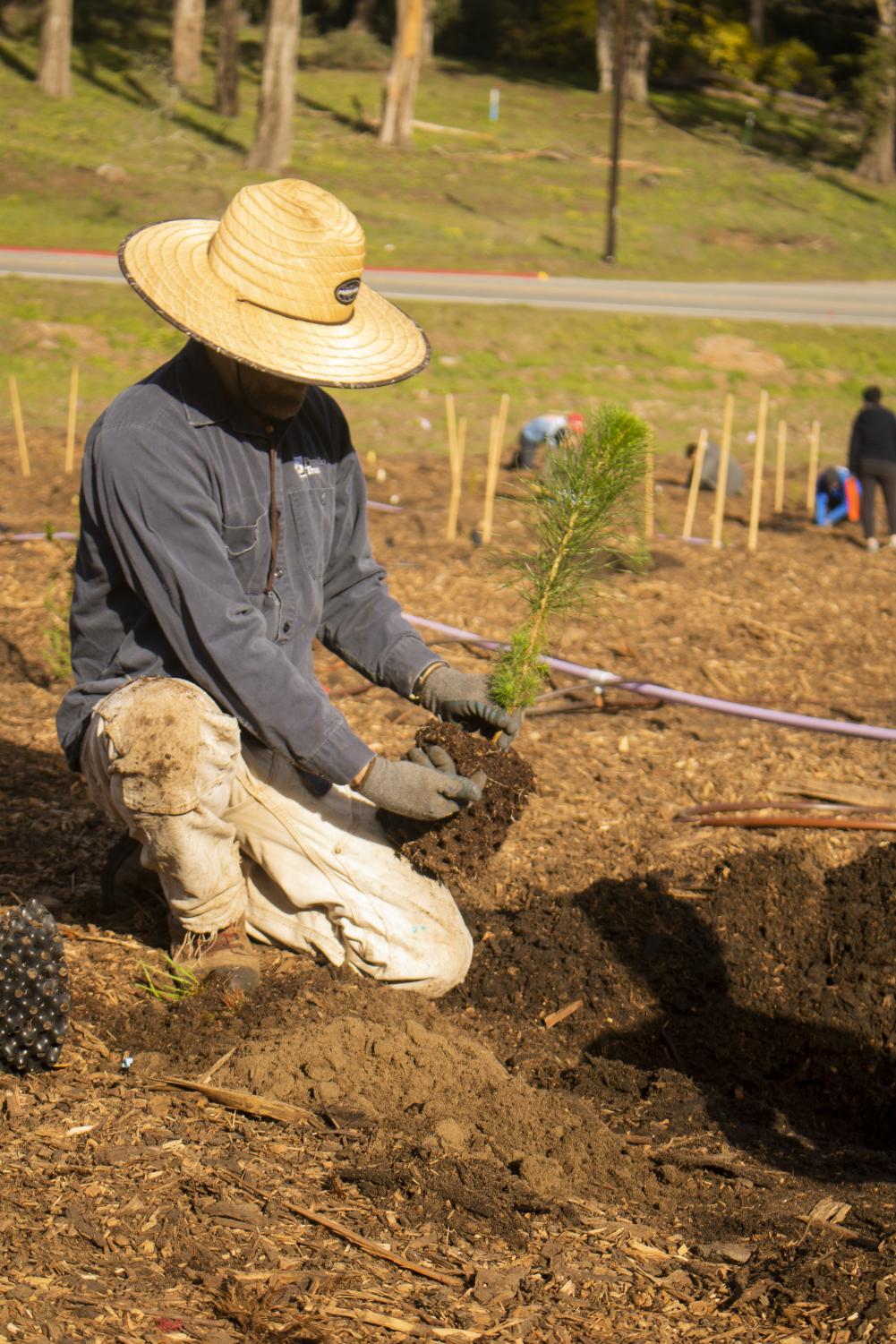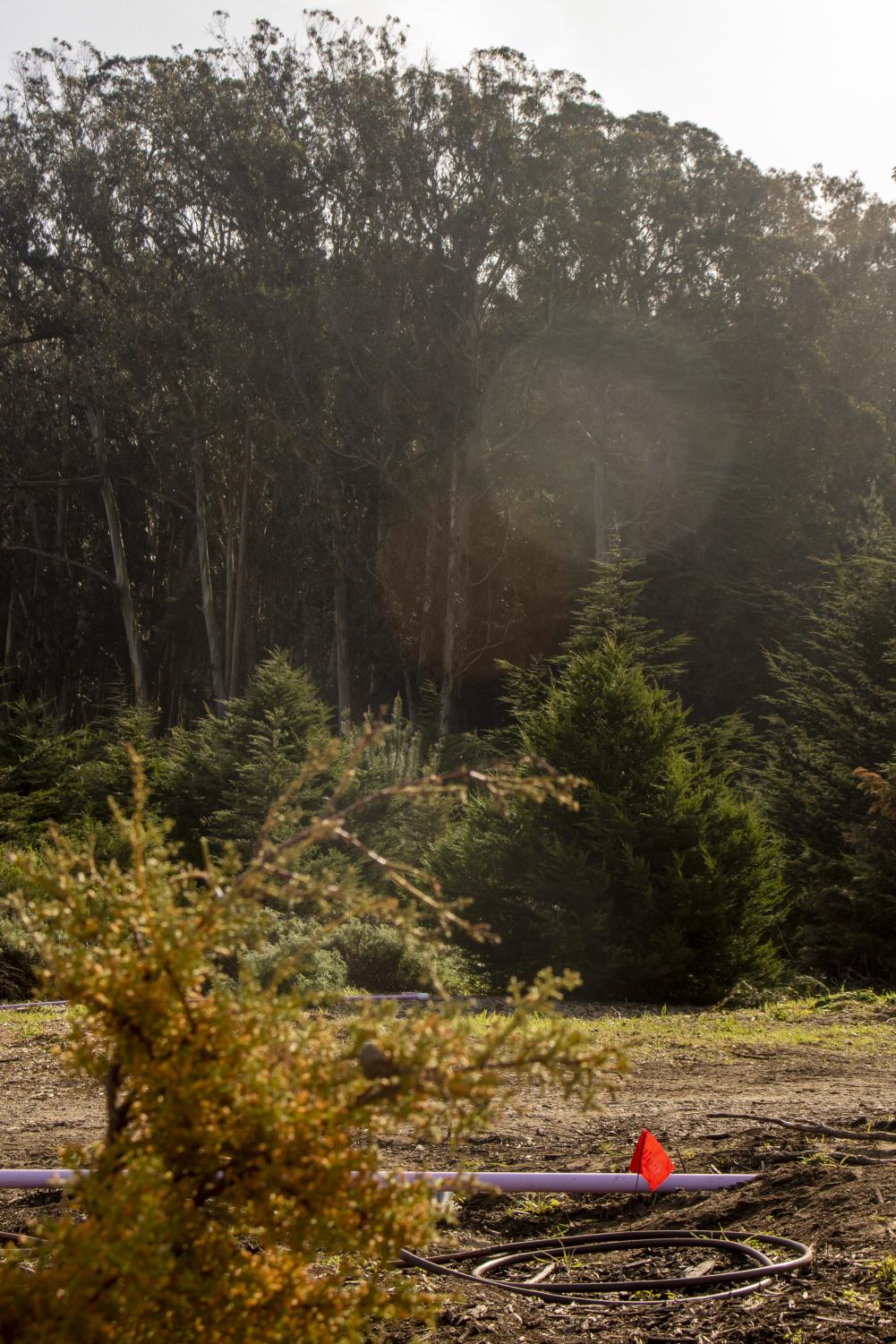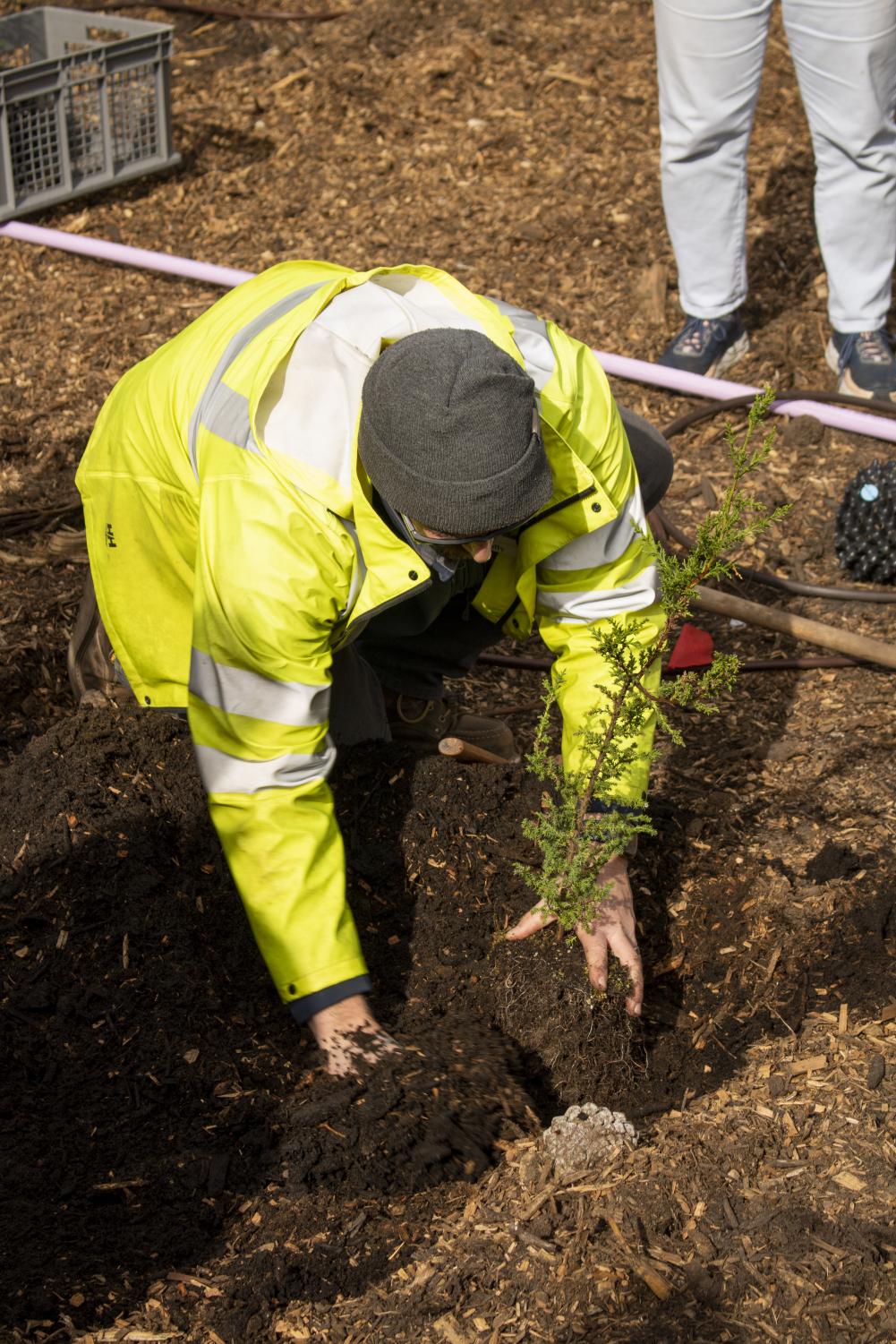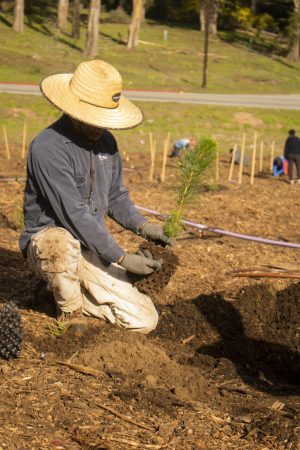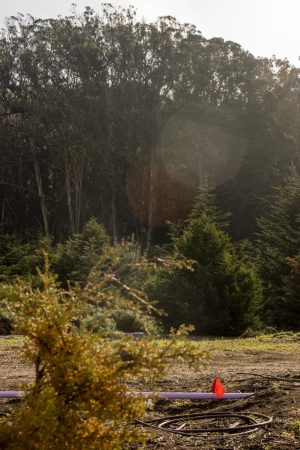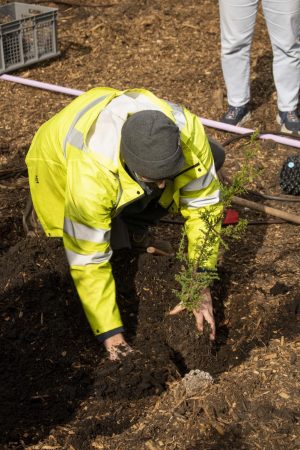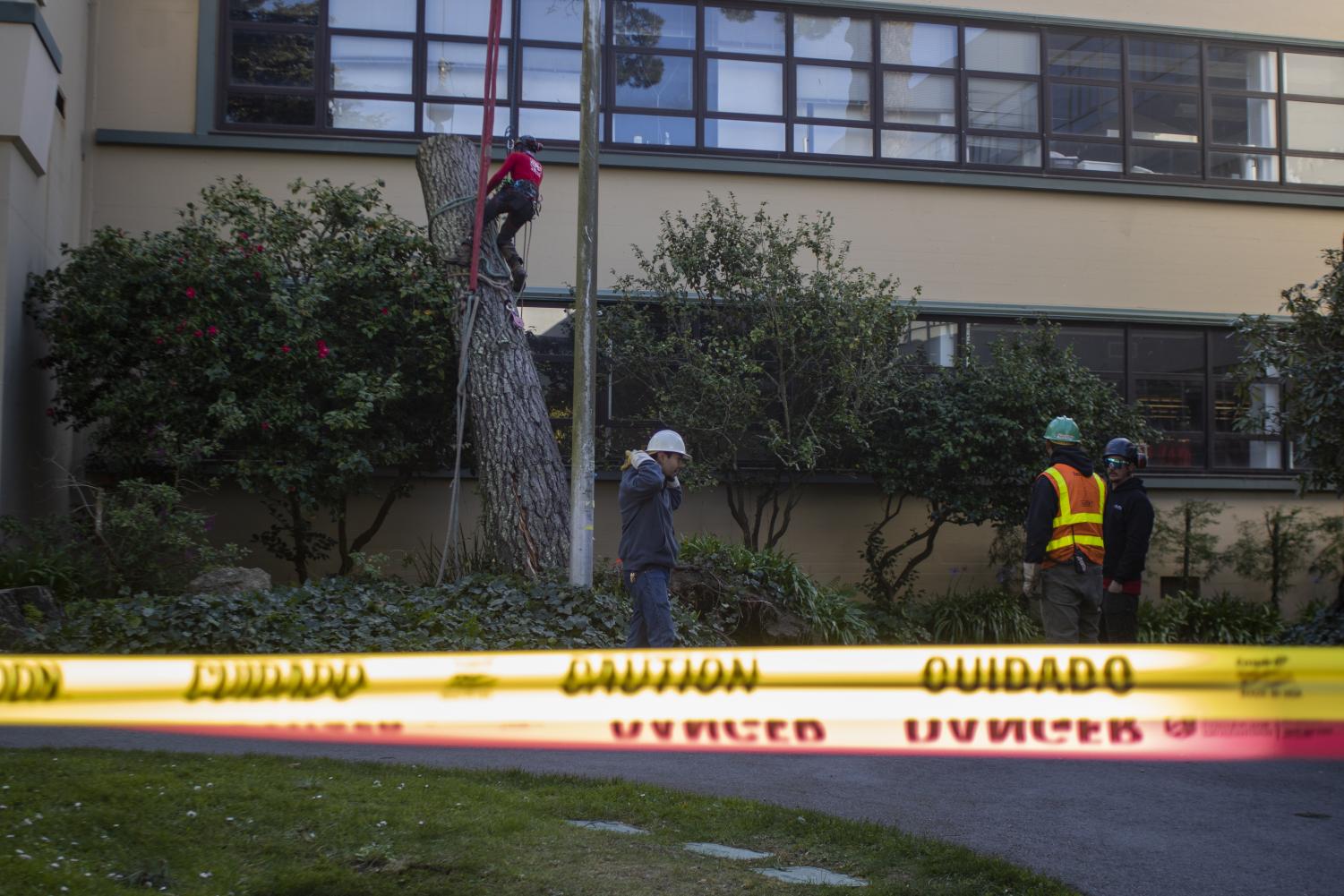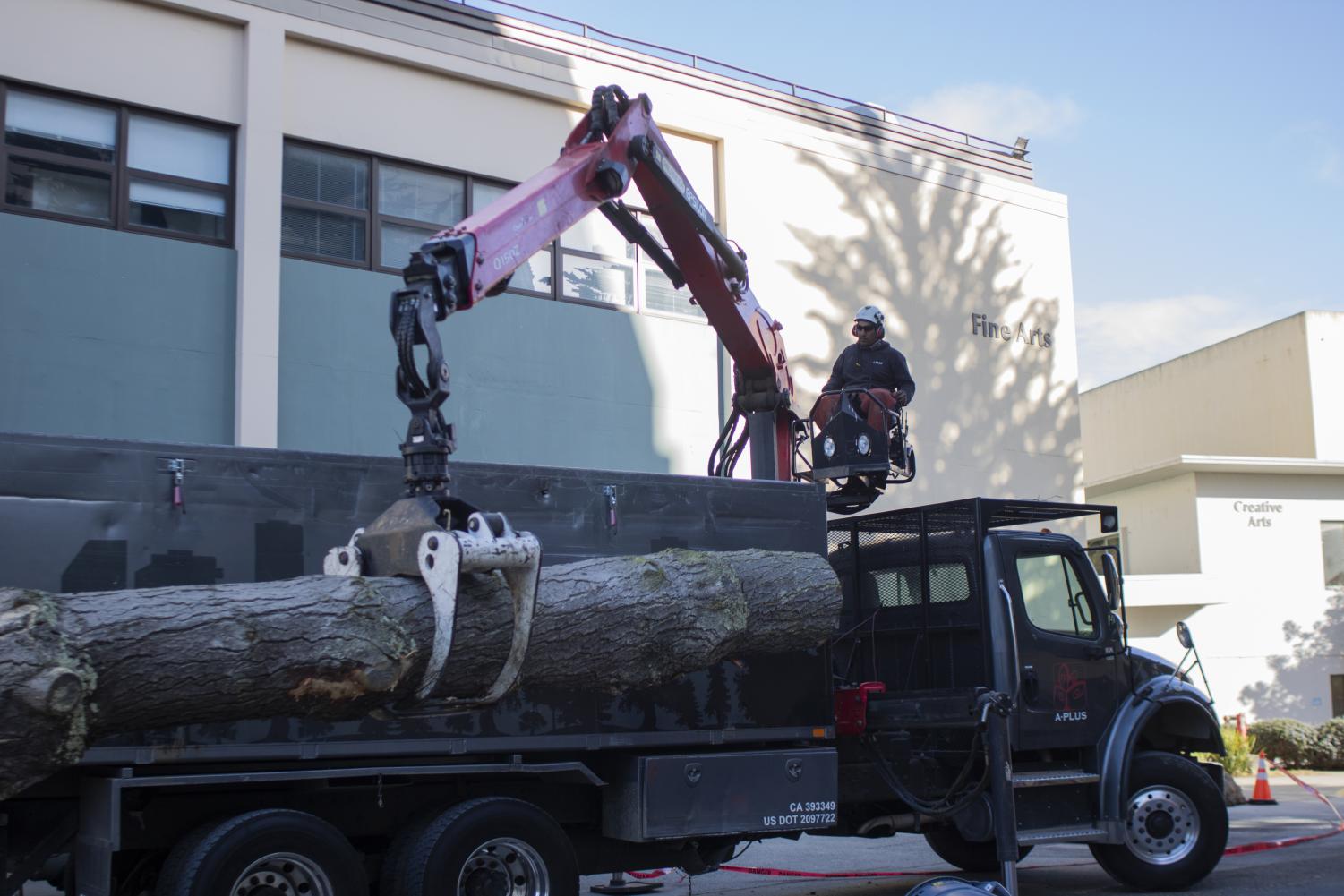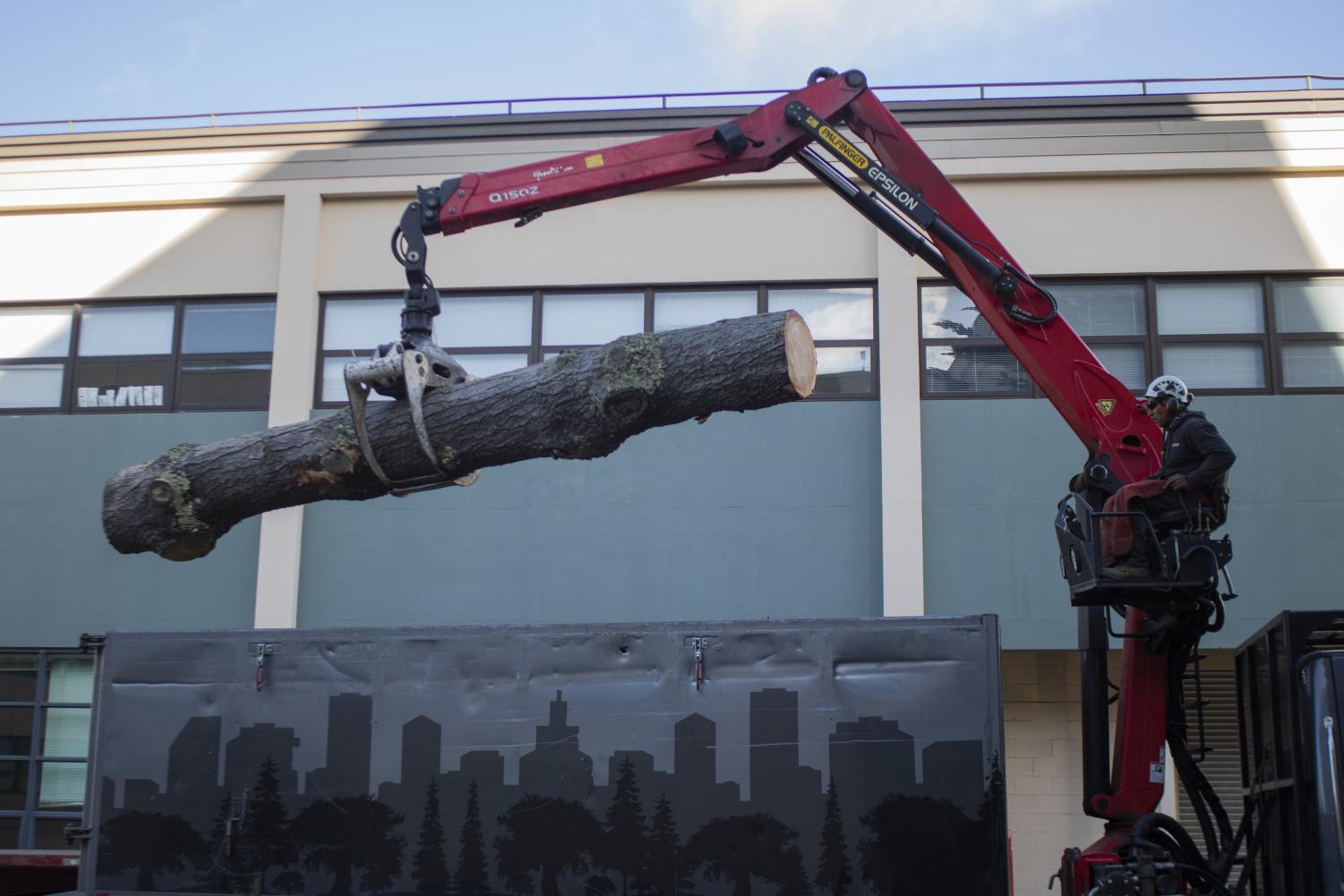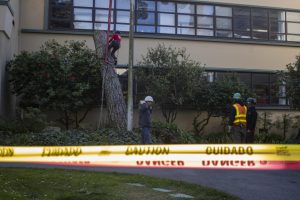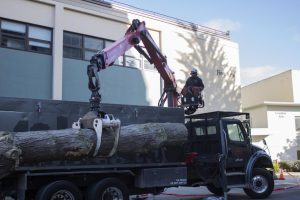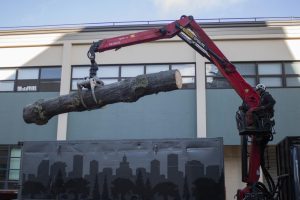Rebounding from the Rain
After one of the most intense California storms in a century, the cleanup and maintenance of San Francisco ecosystems continues to be a team effort.
Presidio forester Chris Stark Weather (left) helps to offload a wheelbarrow full of invasive plant life into the back of a truck in the Presidio on Friday, Feb. 18, 2023. (Oliver Michelsen / Xpress Magazine)
Eucalyptus trees surrounding SF State’s outdoor track swayed back and forth in the rain and wind for days before they finally came crashing down. As one tree “failed,” it was uprooted by intense gusts, knocking into five others. This became a pattern for forested areas across San Francisco, whose maintenance staffs were tasked both with the cleanup of damages and preparation for future storms.
For three weeks through December and January, San Francisco and most of California’s major cities were battered by storms brought on by this year’s atmospheric river. The term atmospheric river refers to a stream of condensed water vapor in the atmosphere that often releases in the form of rain or snow on the west coast, according to the National Oceanic and Atmospheric Administration. While storms brought on by these atmospheric rivers are not new to California, this year’s were abnormally intense.
Mudslides plowed through the underbrush and blocked roads, small streams became raging rivers and city streets flooded across the state, killing more than a dozen, according to a statement from the governor and city records and causing upwards of a billion dollars in property damage. The downpour finally let up in the middle of January, but its effects — both negative and positive — were felt in California ecosystems.
In the immediate aftermath, many reservoirs reached levels higher than their historical averages, and roughly 8% of the state was moved out of the severe drought categorization, according to numbers from the National Integrated Drought Information System (NIDIS). However, cleanup across the state continued.
A month after the storm, park services across San Francisco were still dealing with damages. San Francisco’s Recreation and Parks department counted 140 trees that fell in the timespan of the three-week storm. Sigmond Stern Grove, they noted, was hit the hardest “by far.”
Towering pine and eucalyptus trees surround wide open fields, making the park an optimal home for the yearly Stern Grove music festival. But after the storm, the park was left in disarray.
Hundred-foot tall trees knocked down by heavy winds crushed a park dumpster and blocked paths usually filled with local joggers and dog walkers, closing off approximately half of the park.
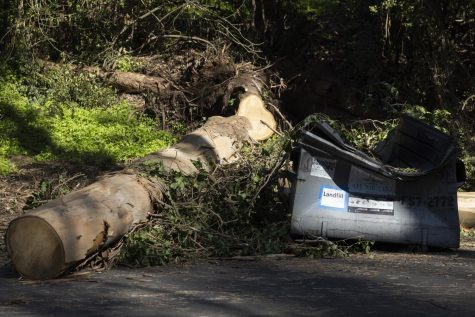
“The biggest problem comes after the rain,” SF State Grounds Manager Robert Murphy explained. “After the rain when the ground is totally soaked… if you’ve got a tree that’s in trouble or has a problem, that’s when [the wind] starts to pull it out of the ground and fall over.”
According to the National Weather Service, wind speeds reached over 100 miles per hour at points during the storm. Gusts that strong proved more than enough to uproot trees surrounded by waterlogged soil.
At SF State, 14 trees were knocked over by the wind, six of which were in the eucalyptus grove surrounding the secluded Cox stadium. One tree fell on a construction trailer by the new science building being built on 19th Avenue, though damage was minimal and no one was injured.
In San Francisco’s Presidio forest, unsuspecting gophers were flushed out of their burrows as cypress trees that stood for over a century came crashing down due to the intense winds. Some had minimal impact, blocking hiking paths or roadways, while others required an immediate response, striking park powerlines and causing outages.
“You can never predict what a series of storms will do,” said Lew Stringer, Associate Director of Natural Resources at the Presidio Trust. He explained that one of the trust’s continued goals is to to recreate the Presidio forest into one that can “withstand intense weather events” like this most recent storm.
During the height of the storm, more than seven inches of rain fell on the Presidio in one day, culminating in a total of 22-to-23 inches total. Most of the plants not ripped from the ground by the wind fared well with the large influx of water. Stringer attributed this to many of the plants in the park being “systematically adapted” to long waiting periods followed by intense bouts of rain.
Intense storms are next to impossible to fully prepare for. The Presidio Trust maintains a “tree assessment program” that tracks the condition of different trees in the park. However, many of the trees that ended up falling hadn’t been deemed as high risk.
Presidio arborist and forester Steven Duffy is part of the team that is tasked with reacting to events like these.
“Everything turns green,” he noted, standing in front of a grove of eight-year-old cypresses. “The plants love it, but they can’t handle it all at once. We’ve got a lot of issues with hydrophobic soil… so when the rains come down, it doesn’t penetrate, it doesn’t percolate down into the deep soil, it kind of just runs off.”
Duffy is also one of the main organizers of the trust’s historical reforestation effort, which brings in foresters and volunteers weekly to help plant trees and new native understory plants. The understory refers to the layer of plant life that grows between the treetops and the forest floor.
More native plants, Duffy explained, make the understory layer more biodiverse and absorb excess moisture from the soil. However, many of the reforestation efforts slated for December were delayed by emergency-storm response.
Another issue for the Presidio trees came not from the strength of the winds, but the direction they came from. Duffy described the winds as a “pineapple express from the south,” explaining that the trees weren’t used to handling gusts from that direction in tandem with the abnormal intensity of this year’s storm.
With no way to prevent the inevitable next “big one,” San Francisco workers can only prepare the natural landscape so much.
“You could cut all the trees down,” Duffy joked. “[That]’s the only way to prevent it. But that’s not what we’re in the business to do. So, yeah, you just kind of have to roll with it and adjust.”
Murphy expressed similar sentiments. Most trees on campus, he noted, were already under stress due to water cutbacks and California’s seemingly never ending drought, and will likely continue to be at risk of being blown over.
On Tuesday, Feb. 21, one large tree by SF State’s fine arts building was blown over by winds less than half as strong as those experienced during the height of January’s storm. Murphy attributed its falling to a mixture of cut roots from the path built next to it, pine pitch canker disease and borer insect infestations.
The uprooted mass required a crane, a crew of chainsaw wielding contractors and a day-long pathway blockage to be removed, but was mostly gone by the end of the next day.
2023 has already been a unique year for weather, and it shows no signs of slowing down. Cold temperatures ushered in hail across San Francisco and allowed for snow to stick across Oakland, the Berkeley Hills and Mt. Tamalpais in the final week of February.
Efforts to maintain San Francisco’s plant-and-wildlife continue in spite of these continually surprising weather events. Every week the weather permits volunteers led by foresters like Duffy and his crew fill different areas of the Presidio, digging on their hands and knees and filling wheelbarrows with invasive vegetation.
Though the storm physically rocked the trust, it also saturated the soil beneath layers of fertilizer with water, making it optimal for the planting of new natives, which the crew took full advantage of. Many of the trees planted won’t reach full size for five to six decades, and only time will tell how their understory layers will fare.
Duffy didn’t seem too worried about seeing the fruits of his and the rest of the team’s labor, though. Instead, he offered that the cypresses planted today were for future generations to enjoy.

Oliver Michelsen is a fourth-year journalism student with a minor in history. Born in Virginia, he moved around frequently throughout his childhood, living...

Benjamin Fanjoy is a San Francisco-based photojournalist. Originally from Maryland, Benjamin moved to San Francisco in the summer of 2018 after completing...


